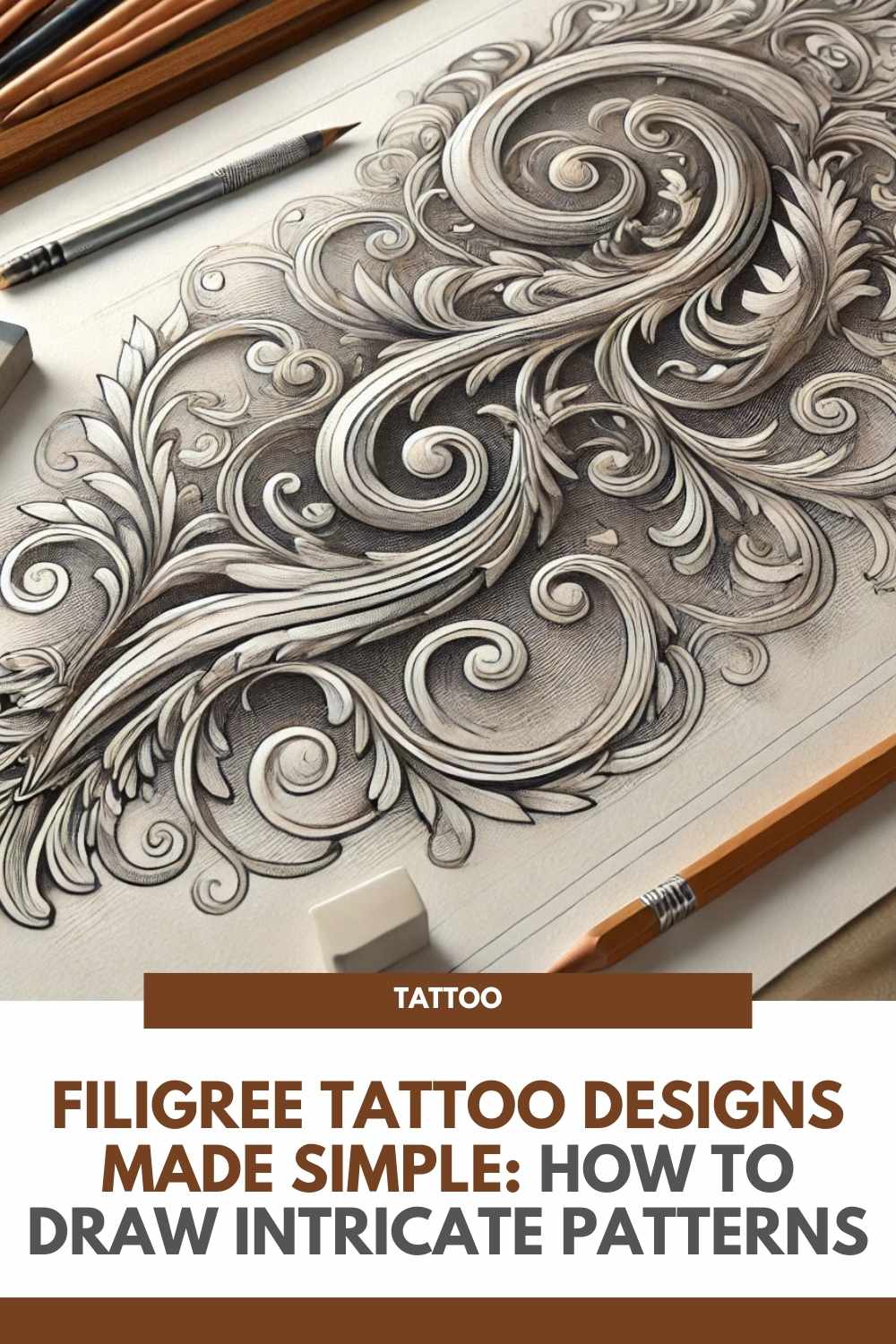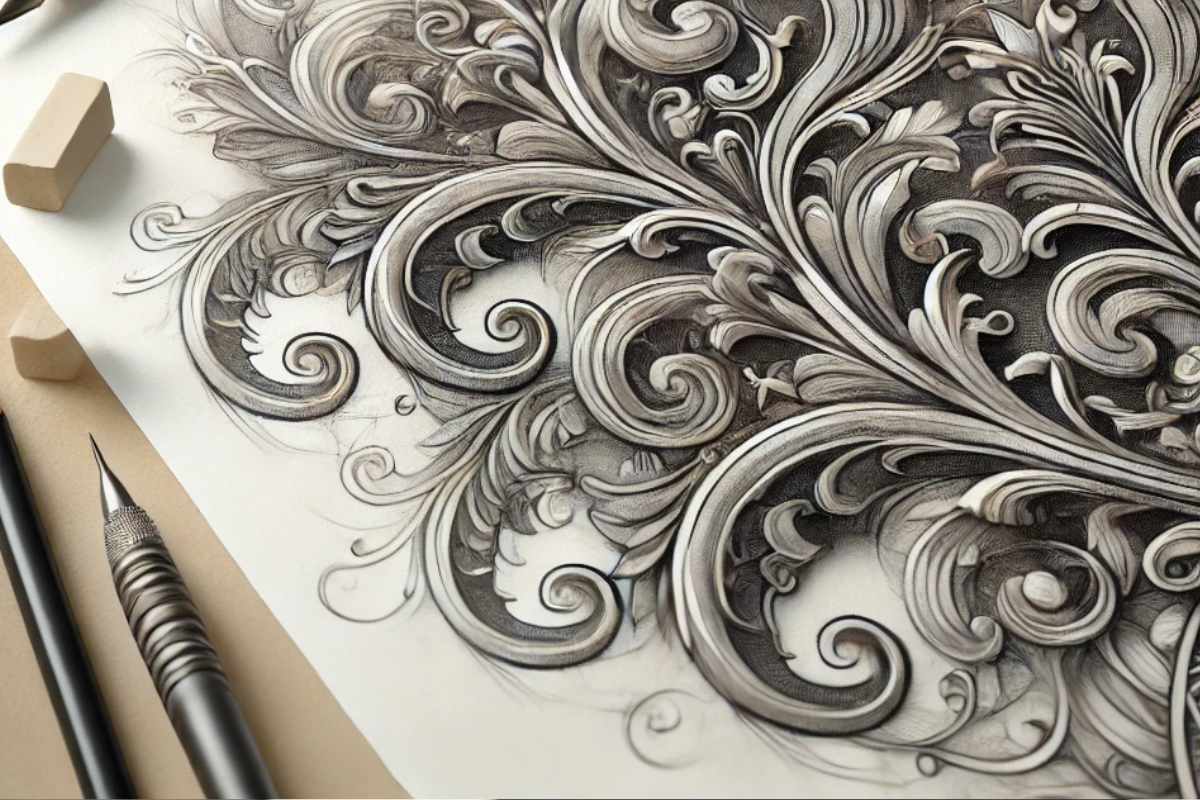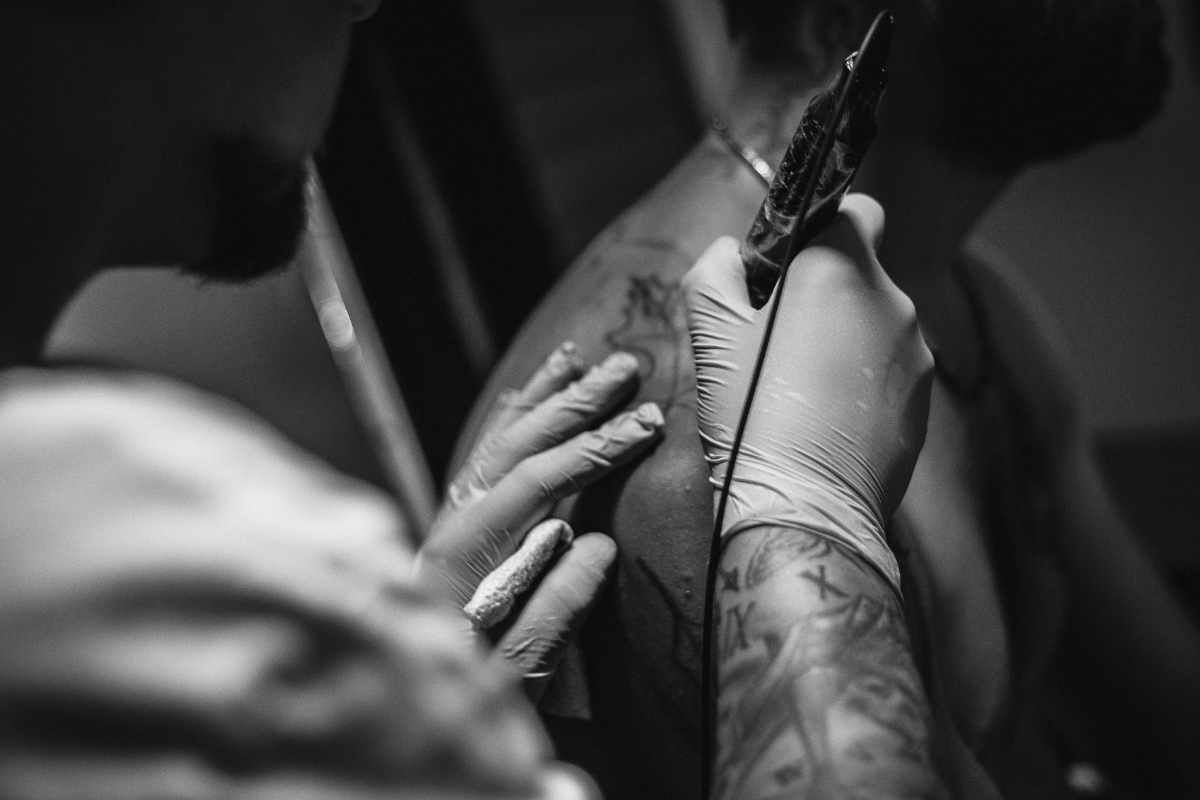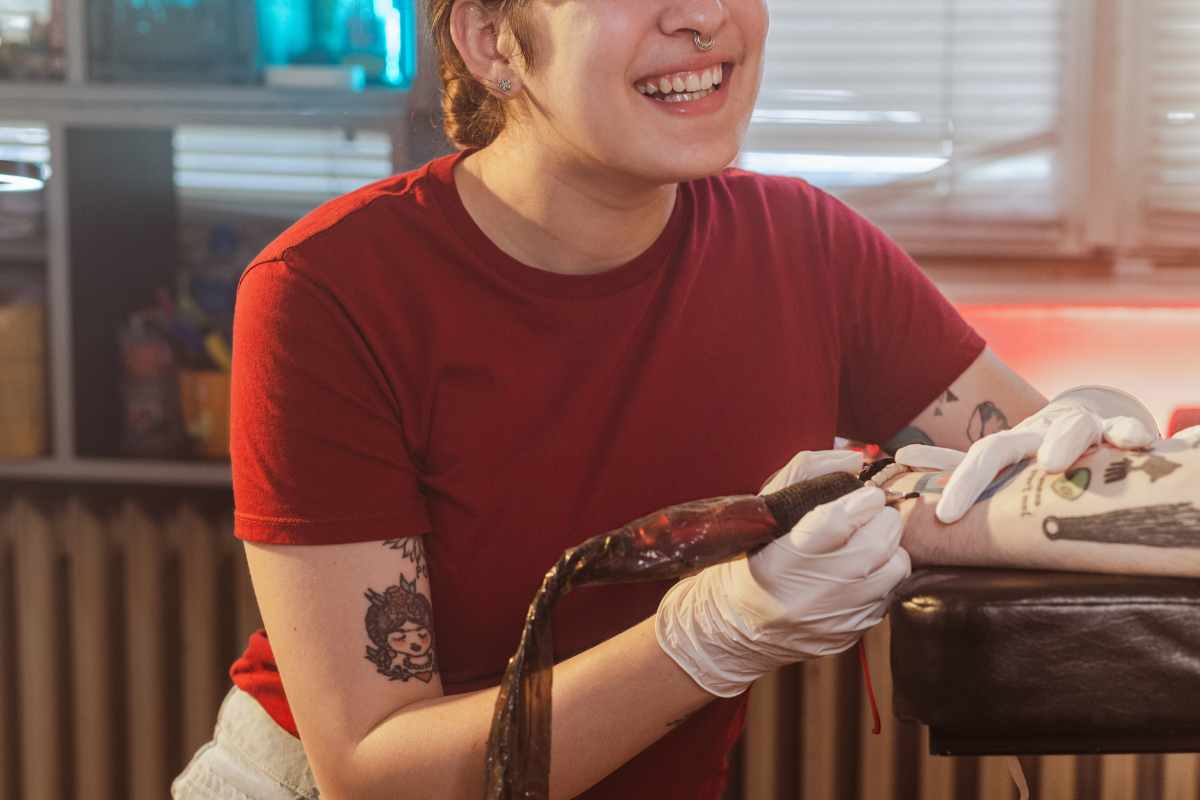Filigree Tattoo Designs Made Simple: How to Draw Intricate Patterns

Filigree designs are elegant and timeless, often used in tattoos to add a touch of sophistication and intricate detail. Inspired by ornamental metalwork, filigree patterns are characterized by their flowing curves, delicate swirls, and symmetrical shapes.
If you’ve ever wanted to learn how to draw filigree for tattoo designs or other artwork, this guide will provide tips and techniques to get you started. Paired with a video tutorial, you’ll have all the tools you need to master this intricate art style.
Understanding Filigree Designs
What Is Filigree?
Filigree is a decorative art style that originated in metalwork, often seen in jewelry and architectural details. In tattoo design, filigree takes these same principles and translates them into ink.
It’s all about balance, symmetry, and graceful lines. These designs are frequently used to frame other tattoo elements, create backgrounds, or stand alone as stunning works of art.
Key Characteristics
To create authentic filigree designs, focus on the following elements:
- Curved Lines and Swirls: The flowing nature of filigree creates a sense of movement and elegance.
- Symmetry: Most designs are balanced on either side, creating a harmonious look.
- Details and Accents: Dots, teardrops, and small leaf-like shapes are often added for extra complexity.
Materials and Tools
Essential Drawing Supplies
To start drawing filigree, you’ll need the following tools:
- Paper or Digital Tablet: Choose a medium you’re comfortable with. Many artists use digital tools for their precision.
- Fine-Tip Pens or Pencils: For detailed lines, opt for pens with a fine tip or sharp pencils.
- Erasers: Mistakes are part of the process, so keep an eraser handy for adjustments.
- Stencils (Optional): Some artists use stencils to create consistent shapes or guidelines.
Video Tutorial Benefits
Watching a video tutorial can provide valuable insights into the process. Pay attention to how the artist builds the design, starting with basic shapes and gradually adding details.
Video tutorials also demonstrate techniques like shading and creating depth, which are difficult to convey through text alone.
Techniques for Drawing Filigree
Starting with Basic Shapes
Filigree designs often begin with simple shapes like circles and ovals. These act as the framework for the more intricate details. By sketching the base structure first, you can ensure the overall design remains balanced.
Creating Flow and Movement
The key to filigree is its fluidity. Draw long, curved lines that flow naturally across the page. Avoid sharp angles, as these can disrupt the elegant feel of the design. Instead, let your lines overlap and intertwine gracefully.
Adding Depth and Detail
Once the basic framework is complete, start adding smaller elements like dots, teardrops, and additional swirls. These details give the design a layered, three-dimensional look.
To enhance depth, experiment with line thickness – thicker lines can represent foreground elements, while thinner lines recede into the background.
Tips for Filigree Tattoo Designs
Scaling for Tattoos
Filigree designs are often used in tattoos, whether as standalone pieces or as part of a larger composition. Consider the size and placement of the tattoo, as overly small designs can lose detail when healed. Scale your design appropriately to maintain clarity.
Using Shading for Dimension
In tattooing, shading can elevate a filigree design by adding depth and texture. Soft gradients and highlights can make the swirls appear more dynamic. Practice blending techniques to achieve smooth transitions between light and dark areas.
Adapting to the Body’s Contours
Filigree tattoos are often placed on curved areas of the body, like the shoulders or wrists. When designing, take into account how the lines will flow with the client’s anatomy. A well-placed design enhances the natural shapes of the body.
Avoiding Common Mistakes
Overloading the Design
One of the most common pitfalls in filigree drawing is adding too many details. While intricacy is a hallmark of the style, overcrowding can make the design look messy and hard to follow. Leave enough negative space to let the elements breathe.
Inconsistent Line Quality
Filigree relies on clean, precise lines. Uneven or wobbly lines can disrupt the design’s elegance. Take your time and use confident, deliberate strokes to maintain consistency.
Lack of Planning
Jumping straight into details without a framework can lead to an unbalanced design. Always start with a rough sketch to map out the composition before refining it.
Practice Makes Perfect
Filigree is a skill that improves with practice. Start by studying existing designs, either in tattoo portfolios or decorative art. Break down the elements you see and try replicating them. Over time, you’ll develop your own style and approach to drawing filigree.
Final Thoughts
Drawing filigree is a rewarding process that challenges your creativity and precision. Whether you’re designing tattoos or exploring the style as an artist, mastering filigree opens up a world of possibilities.
Pair this guide with the video tutorial for a comprehensive learning experience, and don’t forget to have fun experimenting with your own designs. With patience and practice, you’ll soon be creating stunning filigree art that stands out.
We thank Avancer Art Group for the images.
Enjoy The Video Tutorial

Source: Avancer Art Group
Did you find this post useful or inspiring? Save THIS PIN to your Art Board on Pinterest! 😊





Discover More Artistic Inspiration